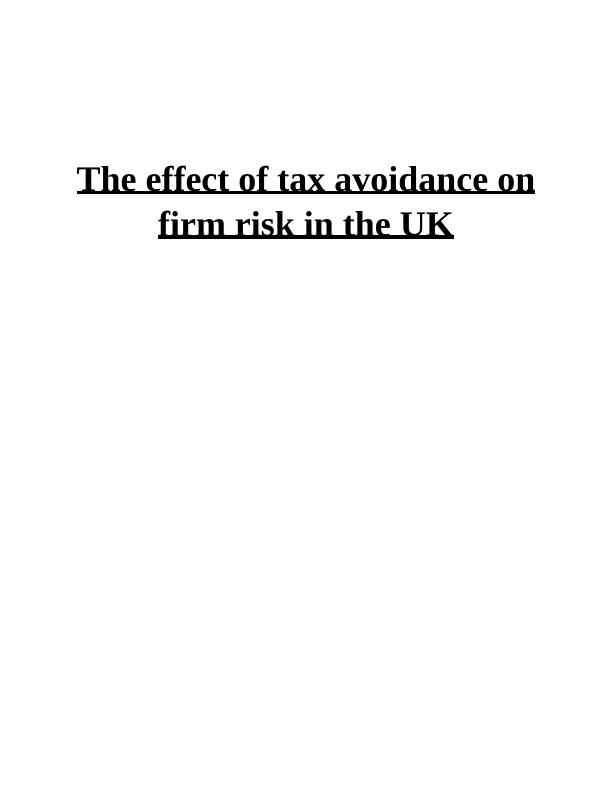The Effect of Tax Avoidance on Firm Risk in the UK
19 Pages5289 Words50 Views
Added on 2023-06-07
About This Document
This study analyzes the impact of tax avoidance on firm risk in the UK through statistical analysis of data from 100 listed companies. The findings reveal correlations between GAAP ETR, Cash ETR, BTD, Tobin’s Q ratio, firm size, fixed assets, ROA, Debt, Leverage and NOL. Descriptive statistics, correlation, regression, ANOVA test and frequencies have been used to determine the degree of relationship among the variables of interest. The study concludes that tax avoidance measures such as GAAP ETR and BTD carry a risk factor for the firm in terms of affecting their stock returns.
The Effect of Tax Avoidance on Firm Risk in the UK
Added on 2023-06-07
ShareRelated Documents
End of preview
Want to access all the pages? Upload your documents or become a member.
SPSS Data Collection - Assignment
|11
|1734
|19
Regression Analysis in SPSS
|16
|1866
|25
Steps to Perform Regression Analysis
|4
|717
|426
Statistical Analysis of Room Prices in UK Hotels
|7
|530
|140
Analytical Methods for Monthly Prices of Index and Stock
|8
|660
|98
Statistics | ANOVA | Assignment
|11
|724
|26




